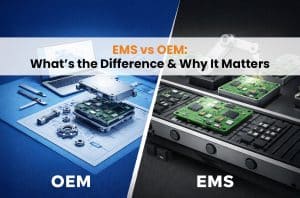In electronics manufacturing, soldering is a fundamental process that ensures the proper connection of components on circuit boards. Traditional soldering methods, such as reflow and wave soldering, have been the go-to techniques for years. However, as technology evolves, so does the need for more advanced and efficient soldering methods. It is one such technology that has gained prominence in recent years. In this article, we’ll explore Vapor Phase Soldering, understanding its principles, benefits, applications, and how it’s shaping the future of electronics assembly.
What is Vapor Phase Soldering?
Vapor Phase Soldering is a solder reflow technique that uses vaporized solder to create a controlled and uniform soldering environment. The procedure includes the following crucial elements:
a. Vapor Phase Fluid: A specialized fluid, often perfluoropolyether (PFPE), is heated to its boiling point, creating a vapor cloud with a consistent temperature and pressure.
b. Solder Paste: Solder paste, suitable for vapor phase reflow soldering, is applied to the PCB (Printed Circuit Board) where solder joints are required. Soldering systems generate this kind of solder paste at maximum temperatures of 230°C (446°F).
c. Lowering the PCB: The PCB is carefully lowered into the vapor cloud, exposing it to the vaporized solder.
d. Condensation: The vaporized solder condenses on the PCB’s surfaces, forming precise and reliable solder joints.
Advantages Vapor Phase Soldering process
They offer several significant advantages over traditional soldering techniques, including reflow soldering:
a. Even Heating: It ensures uniform heating across the entire PCB, minimizing the risk of thermal stress and component damage, distinguishing it from traditional reflow soldering.
b. Precise Temperature Control: The boiling point of the vapor phase fluid dictates the maximum temperature, allowing for precise control and preventing overheating.
c. No Oxidation: Since the solder joints are formed in an oxygen-free environment, oxidation is virtually eliminated, resulting in stronger, cleaner connections. This is a key benefit of vapor phase reflow soldering.
d. High Thermal Efficiency: It is energy-efficient, as the latent heat of vaporization is used to maintain the soldering temperature, making it an efficient soldering method.
e. Minimized Solder Bridging: The controlled condensation process minimizes the risk of solder bridging between closely spaced components, a common challenge in reflow soldering.
Applications of Vapor Phase Soldering Process
a. Consumer Electronics: It is commonly used to assemble consumer electronics, such as smartphones, tablets, and laptops, where small, densely populated PCBs require precise soldering.
b. Medical Devices: The reliability and consistency make it an excellent choice for medical device manufacturing, ensuring the quality of critical electronic components.
c. Aerospace and Defense: In industries where robust soldering is essential, such as aerospace and defense, it is relied upon for its consistent results in vapor phase reflow soldering.
d. Automotive Electronics: Vapor phase soldering plays a crucial role in automotive electronics, where temperature-sensitive components and high-reliability standards are prevalent.
Also Check Other Blogs: Conformal Coating: Methods, Materials, and Significance in Electronics Protection
The Vapor Phase Soldering Process
a. Preheating: The PCB is preheated to ensure that it reaches the desired temperature uniformly. This phase minimizes thermal shock during soldering, a critical consideration in vapor phase reflow soldering.
b. Solder Application: Solder paste suitable for vapor phase reflow soldering is applied to the PCB at the locations where solder joints are required. The solder paste typically contains solder alloy particles, flux, and solvents.
c. Vapor Phase Exposure: The PCB is lowered into the vapor cloud of the heated vapor phase fluid, a crucial step. The vapor surrounds the PCB, causing the solder paste to melt and then reflow into solder joints.
d. Cooling: After the solder joints are formed, the PCB is raised out of the vapor cloud and allowed to cool, an essential part of the vapor phase reflow soldering process. The rapid cooling phase ensures the solder solidifies quickly, creating strong, reliable connections.
Challenges and Considerations:
Roots EMS offers the best Vapor phase soldering service in India through lot of challenges
a. Component Sensitivity: Some components may be sensitive to temperature changes or extended exposure to high temperatures. Careful profiling and process control are necessary to prevent damage
b. Vapor Containment: Proper vapor containment and exhaust systems are required to avoid escaping harmful vapor phase fluid into the environment
c. Board Design: The design of the PCB, including component placement and layout, must consider the capabilities and limitations
Conclusion:
As technology evolves, it’s likely to play an increasingly crucial role in electronics manufacturing. Roots EMS offers a sustainable and energy-efficient soldering method that meets the demands of modern electronics, from miniaturized consumer devices to robust aerospace and defense applications.


